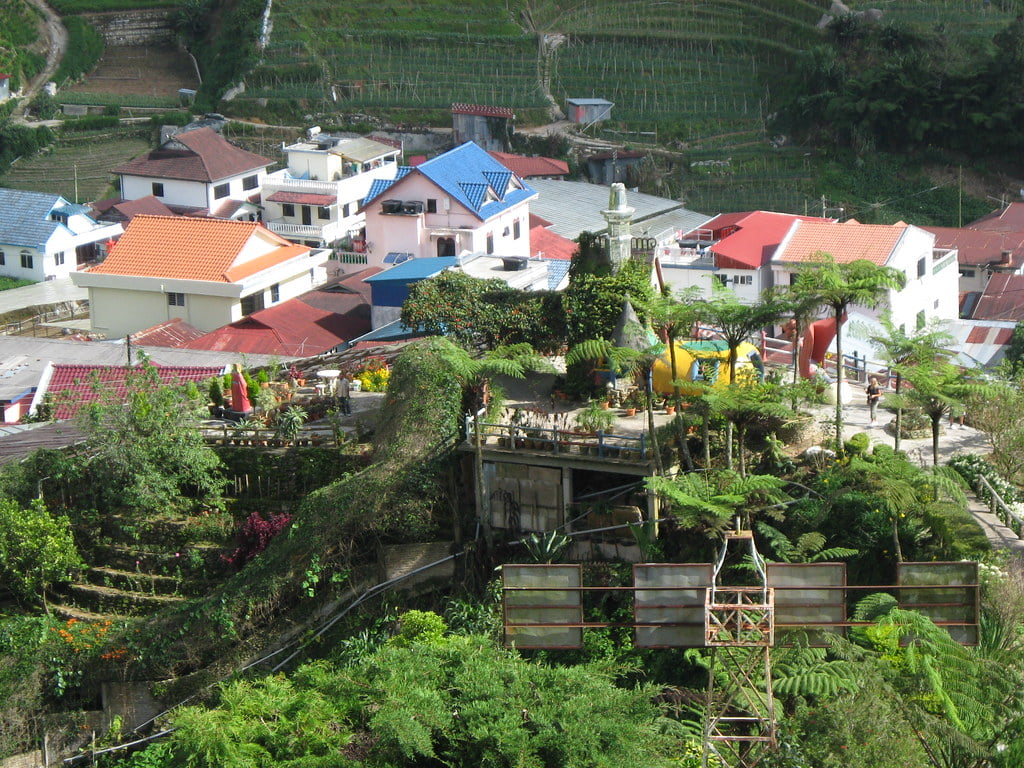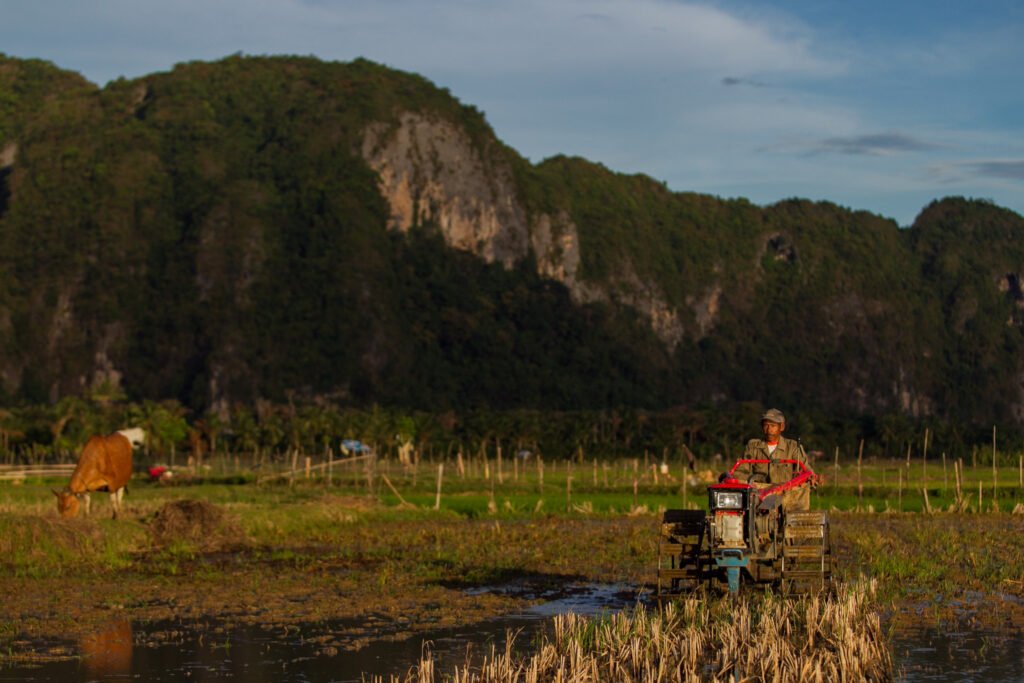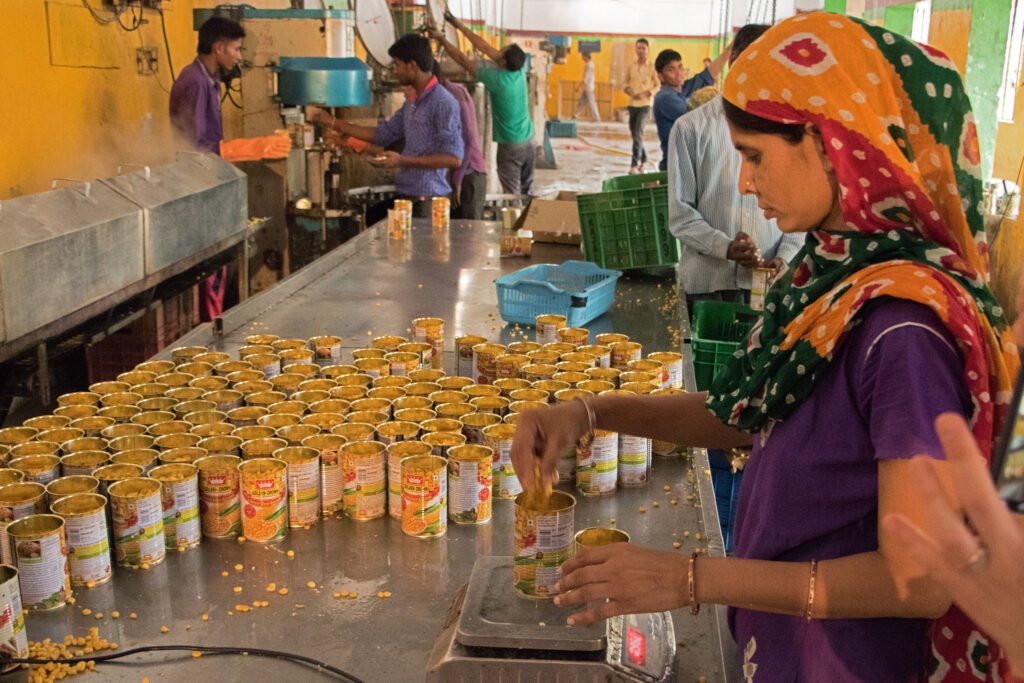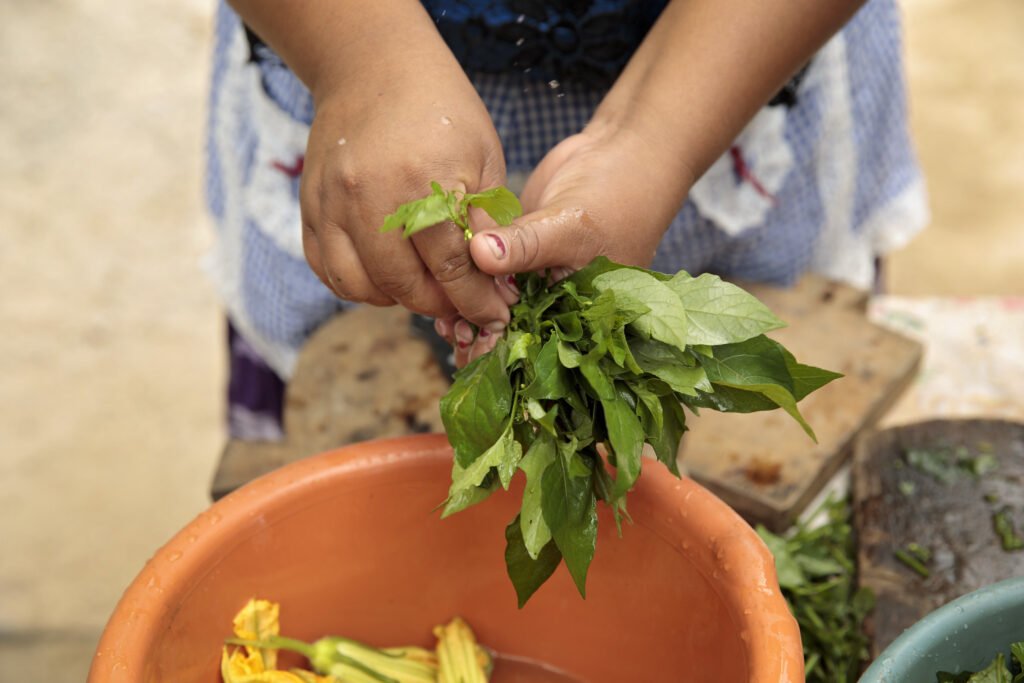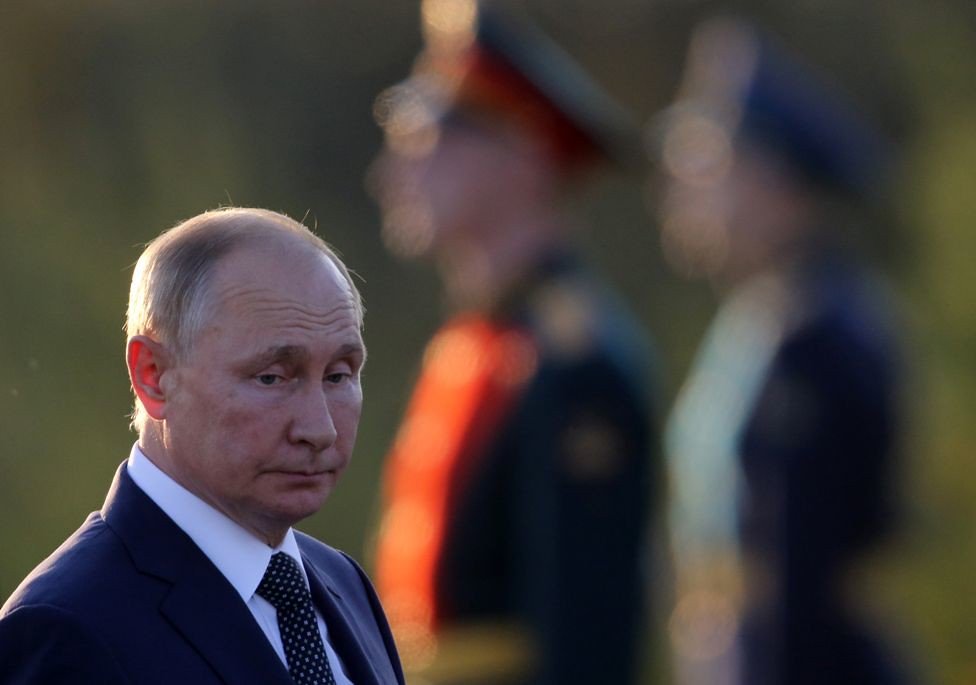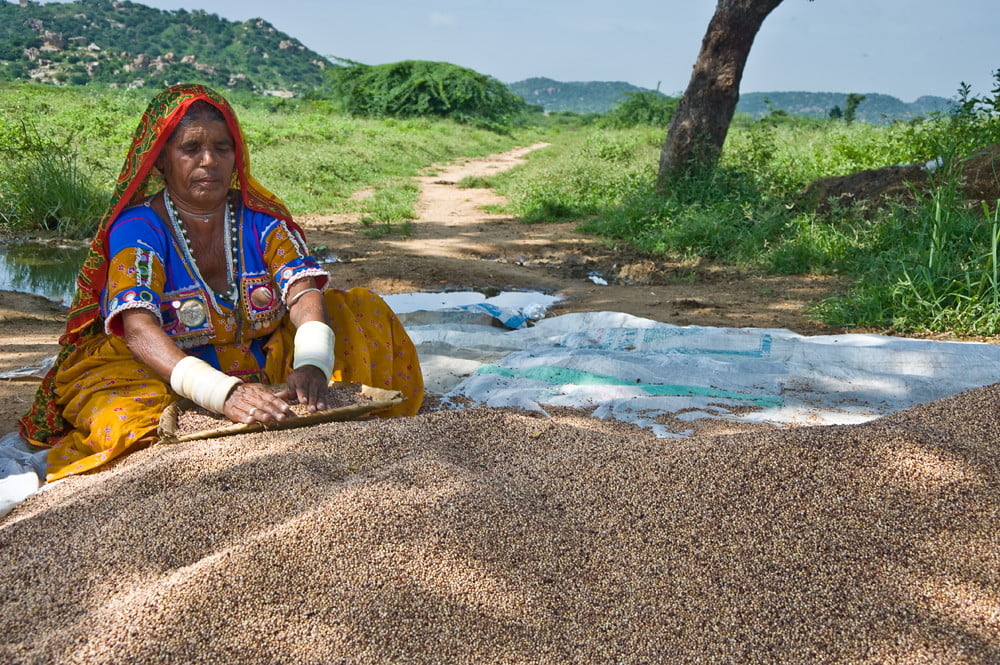India’s school meals program is ubiquitous, helping deliver food to millions. It faces threats from multiple angles.
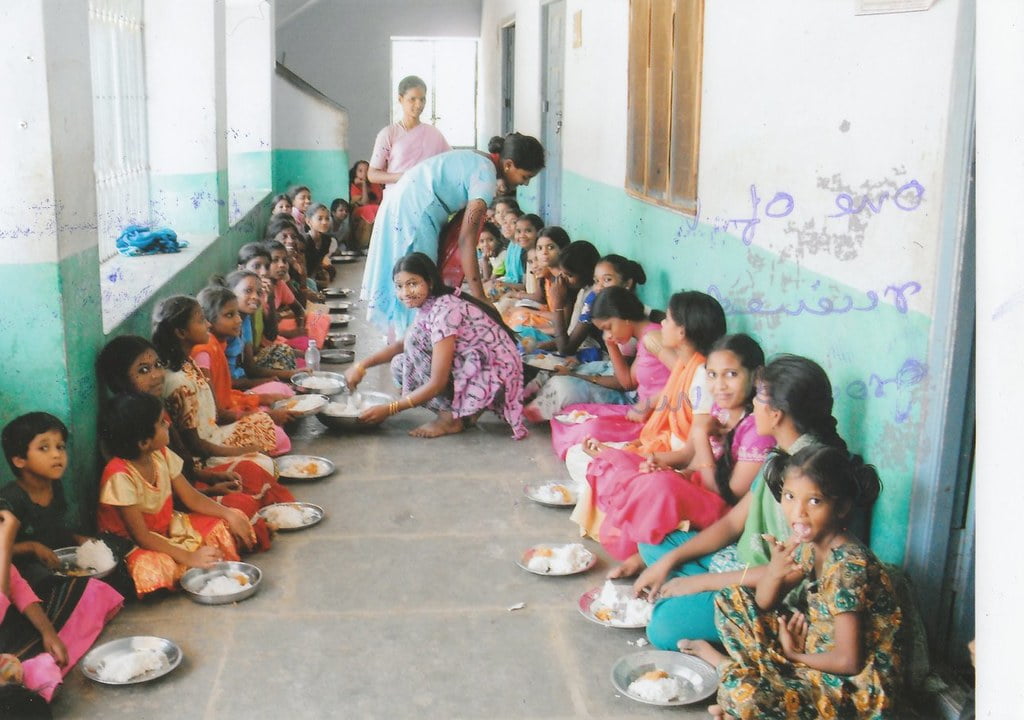 More than 100 million Indian children are served lunch at school. : Heather Cowper, Flickr
More than 100 million Indian children are served lunch at school. : Heather Cowper, Flickr
India’s school meals program is ubiquitous, helping deliver food to millions. It faces threats from multiple angles.
It would be hard to find a larger or more universal school meals program than that in India. Until COVID-19 hit more than 87 percent of children in rural government schools were being served the ‘Mid-Day Meal’. At last count the scheme covered 118 million children.
The benefits of school meals are well established, but government budget pressures threaten the sustainability of India’s program. It will also need to fend off corruption and corporate lobbyists if it is to continue to thrive.
With its roots in pioneer state Tamil Nadu in the 1960s, the midday meals program went national in 1995. But it wasn’t until 2001 that it moved beyond dry rations such as wheat and rice.
In 2001, many parts of India grappled with drought and in some places (Madhya Pradesh, Rajasthan and Odisha) people were reported to have died from starvation. The People’s Union for Civil Liberties, petitioned the Supreme Court, pointing out that although the government had enough food stocks, people were dying, and it must be directed to act. On 28 November 2001, the Supreme Court directed the government to implement the meal scheme by providing every child in every government and government-assisted primary school with a cooked midday meal, with a minimum nutritional content of 300 calories and eight to 12 grams of protein each day of school for a minimum of 200 days in a year.
In the first decade, states gradually succeeded in putting the required infrastructure in place — building kitchens, ensuring water supply in the schools, and appointing cooks and helpers. Today, typically, all schools have one cook and one helper. In some states (e.g., Tamil Nadu, Karnataka), there is a three-member team, including an organiser who is in-charge of accounts, stocks and purchases.
Hygiene conditions in the school kitchens were a major concern in the initial years because there was no access to clean drinking water and there were no proper kitchens. The critical importance of this became very evident in 2013, when in Bihar school children died as a result of food poisoning: the school did not have its own premises, and the kitchen was in a veranda. The cook fetched oil in a container from the sarpanch’s or the teacher’s house, which had previously been used to store pesticide.
Since then, the midday meal program has been shown to benefit enrolment, attendance, learning outcomes and even nutritional intake and nutritional outcomes. Enrolment effects were especially strong for girls and children from disadvantaged communities like Adivasis (tribals or literally, ‘original inhabitants’).
A study by Barooah and her co-authors in Delhi evaluated the impact on learning effort in school, and found that children who had been fed a proper meal did not give up as easily. There are socialisation (habit formation such as queuing up for meals, sharing a meal) and educational benefits (personal hygiene such as washing your hands before eating) as well.
The program also created employment opportunities for women. In many parts of rural India, there are few opportunities for a woman to get paid work outside her home. Being a cook in a school is one form of low paid, but dignified, employment.
Having their children fed at home also makes for one less chore for women, who typically undertake the majority of childcare in India. This is significant for working women.
Though it is rare to hear complaints that children don’t get enough food, questions about the quality of the mid-day meal persist. From 2010 onwards, ensuring nutritional content of mid-day meals has become a big battle.
Initially, the same food was given every day. Now there are weekly menus. Afridi found that in Chhindwara district (Madhya Pradesh) the improved menus met up to 22 percent of the required daily nutritional allowance for these children as opposed to just 11 percent where the old menu was served. Some states also provide eggs. Eggs are nutrient dense ‘superfoods’, yet many states have been resisting their introduction on ostensibly religious grounds.
Socialisation benefits, including the breaking down of caste barriers, have also been documented. Recently, a Dalit cook was removed because of her caste. In other instances, when such resistance arose, district administrators stepped in. Even as caste issues persist, the mid-day meal has become an important way to break the caste barriers. There are instances of children where they were given food by their parents and told not to eat at school because the cook was from another community. These children, when they go to school and they see all their schoolmates eating together, eat with the others but don’t tell anyone at home.
Despite its success as a social policy, government commitment and adequate budgets remain important.
The central government provides the grain component free of cost to the states. In addition, cooking costs are also provided for the other ingredients. Though this has increased over the years, starting from just Rs 1 per child per day in 2004, to between Rs. 4-6 per day (for primary and upper primary school children, respectively), the revision in the cooking costs per child per day is inadequate.
This year’s budget (2022-23) is slightly lower than last year’s: in nominal terms, it has been slashed by about Rs. 1000 crores (US$13 million). Last year’s cost was Rs. 11,000 crores (US$14 billion).
Many other concerns remain: the link between India’s health program (deworming, health check-ups, micronutrient – especially iron – supplementation) and the mid-day meal program in most parts of the country remains weak. Corruption is also a concern and requires constant vigilance.
An emerging challenge is the corporate lobby, which views the mid-day meal budget as a large potential ‘market’. In 2008 a biscuit manufacturers’ association attempted to lobby the central government to replace hot cooked meals with fortified biscuits. Such lobbyists have not given up.
Reetika Khera is a development economist and teaches at the Indian Institute of Technology Delhi.
Originally published under Creative Commons by 360info™.
Editors Note: Prof. Reetika Khera


